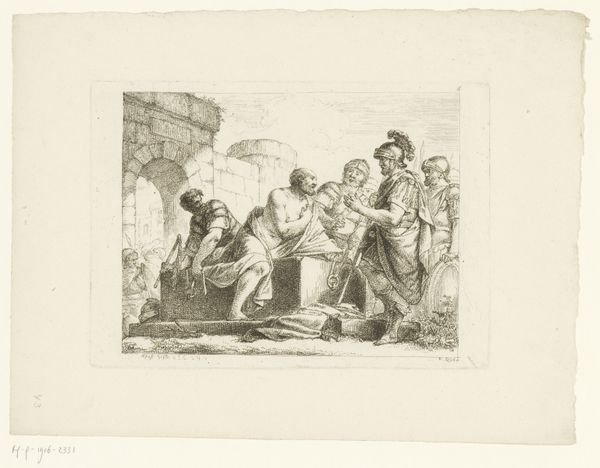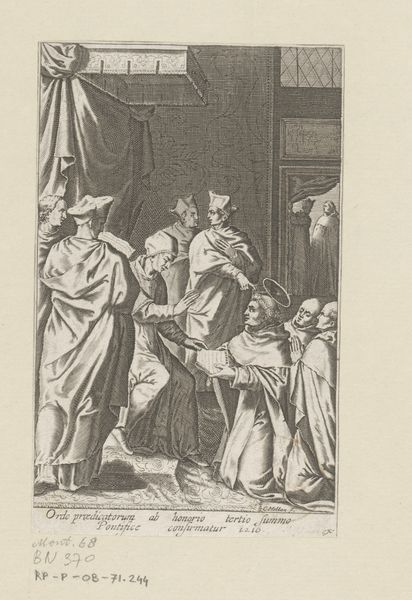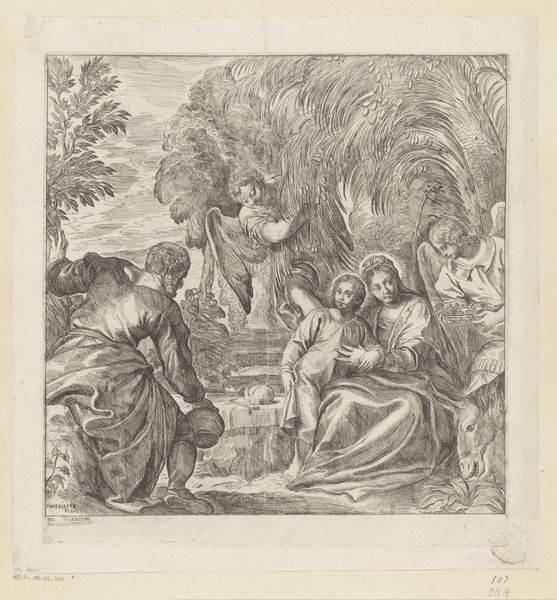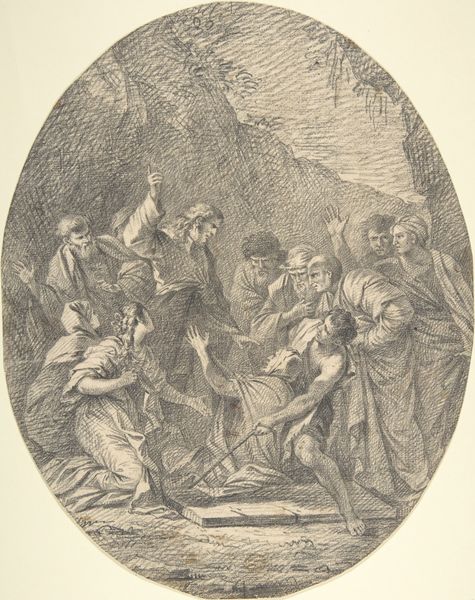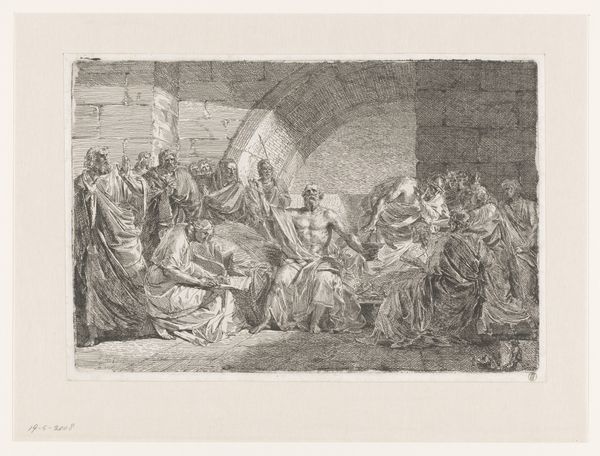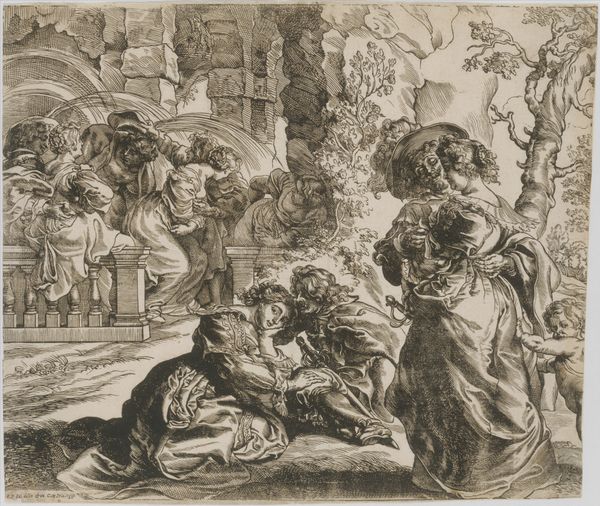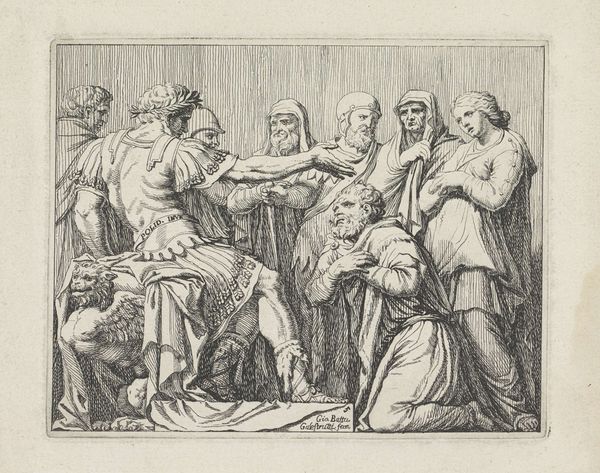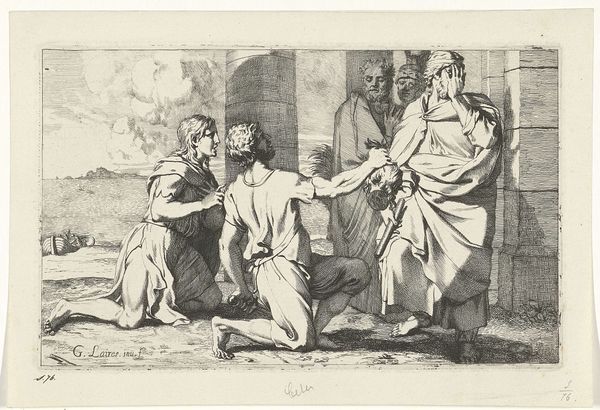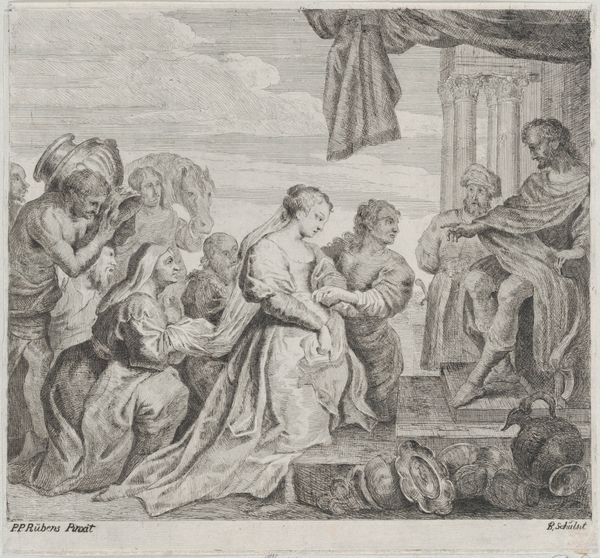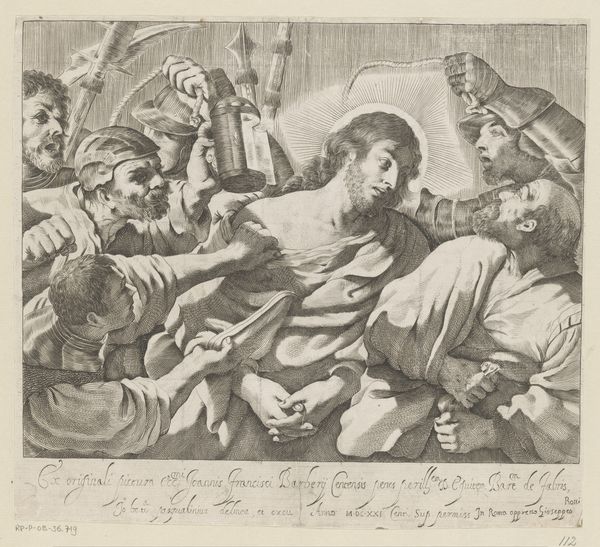
drawing, print, intaglio, engraving
#
drawing
#
baroque
# print
#
intaglio
#
figuration
#
line
#
engraving
Dimensions: height 165 mm, width 203 mm
Copyright: Rijks Museum: Open Domain
Curator: Welcome! We’re standing before "Maria met Kind aanbeden door engelen," or "Mary and Child Adored by Angels" in English, a compelling intaglio print made by Godfried Maes sometime between 1659 and 1700. The print's composition features an adoration scene, rich in Baroque sensibility. Editor: The use of line work is incredible. There’s so much depth achieved with simple engraving! It feels at once detailed and a little ephemeral; I’m especially struck by the way it renders the cherubs; their chubby figures look like a dream. Curator: Absolutely! The linear technique contributes to the drama typical of the Baroque period, playing with light and shadow, drawing our attention to the Virgin and Child, the symbolic center. Notice the cherubs bearing a basket of flowers as tribute. This imagery was intended to evoke a sense of divine grace and the Virgin’s purity. Editor: And to what end? Beyond the divine association, depictions like these always give me pause. Is the print serving a religious or social function here? This idealized vision of motherhood excludes and pressures so many other experiences, even then. Curator: These images certainly operated within a societal structure where religious institutions held immense influence, shaping moral and familial ideals. Artists like Maes contributed to a visual culture that reinforced those ideals, so your hesitation is very valid here. The Virgin as a mother figure was an extremely powerful and recognizable emblem. Editor: It’s compelling how those historical contexts bleed into how we interpret artwork like this today. The technical artistry still captivates, yet, looking through our modern, secular lens, its social impact has definitely been fraught and multifaceted. Curator: Precisely. Examining these works is not only about appreciating the artistic skill, it involves understanding the power structures they embodied. It allows for critical dialogue between the work itself, its original intention, and its evolving reception throughout the ages. Editor: It is a poignant reminder to question what we are actually looking at.
Comments
No comments
Be the first to comment and join the conversation on the ultimate creative platform.
